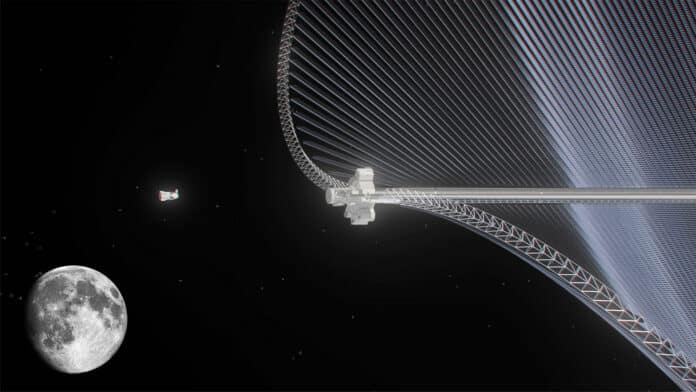For centuries inventors have been pondering and perfecting the way to harvest solar energy. However, harvesting solar energy on Earth is restricted to the daylight hours of the location – a limitation that does not exist while in space. Knowing this, researchers and space agencies worldwide have launched studies looking at the feasibility of constructing orbiting power plants for real. This technology is capable of collecting solar power in space and beaming limitless clean energy back to Earth via microwave transmissions.
Now the science fiction concept is getting closer to becoming a reality, as a new project aims to continuously capture limitless sunlight beyond Earth’s surface – in this case, the Moon.
The European Space Agency (ESA), along with a Switzerland-based company Astrostrom, has designed a Greater Earth Lunar Power Station (GE⊕-LPS), the concept of gathering some of the unlimited sunlight available in space, then transmitting it down to users.
The new project is part of ESA’s Open Space Innovation Platform Campaign on ‘Clean Energy – New Ideas for Solar Power from Space.’
Taking inspiration from a butterfly, GE⊕-LPS will most likely have V-shaped solar panels with integrated antennas deployed in a helix configuration extending more than a square kilometer end to end. The design could hypothetically allow the satellite station to beam as much as 23 megawatts of sustained energy for lunar surface operations.
As per the team’s study, both the GE⊕-LPS and even its solar panels would largely be constructed using lunar resources, such as iron and sulfur recovered from the lunar surface, to manufacture pyrite for solar cells.
The station would be located at an Earth-Moon Lagrange point around 61 350 km from the lunar surface and is designed for sustained human habitation. At this proposed location, the station would serve as a gateway between Earth and Moon operations, providing artificial gravity for adaptive health purposes to potentially become an attractive tourist destination in its own right – as well as a prototype for further space settlements in cislunar space.
This futuristic concept might be advantageous for large-scale and more environmentally-friendly solar power satellite production in the longer term, serving terrestrial clean energy needs.
Astrostrom engineers estimate that such lunar-made solar power satellites would require around five times less velocity change to place them into geostationary Earth orbit than satellites launched from Earth.
In addition to investigating the technical and financial feasibility of the concept, the study found that GE⊕-LPS could be achieved without requiring any technological breakthroughs. Moreover, solar power satellites produced on the Moon would not only be cheaper than any comparable Earth-developed solar power satellite, but the electricity generated for Earth would also be cost-competitive with any terrestrial power alternative.
“Launching large numbers of gigawatt-scale solar power satellites into orbit from the surface of the Earth would run into the problem of a lack of launch capacity as well as potentially significant atmospheric pollution,” explains Sanjay Vijendran, overseeing ESA’s SOLARIS space-based solar power research project. “But once a concept like GE⊕-LPS has proven the component manufacturing processes and assembly concept of a solar power satellite in lunar orbit, it can then be scaled up to produce further solar power satellites from lunar resources to serve Earth.”
Reference:
